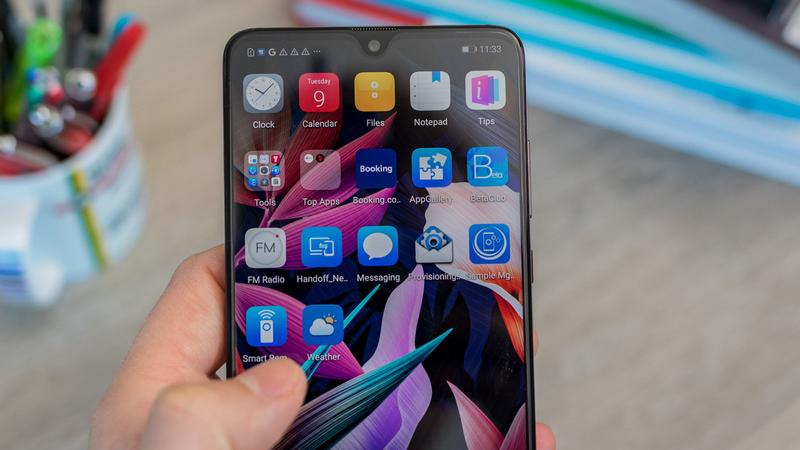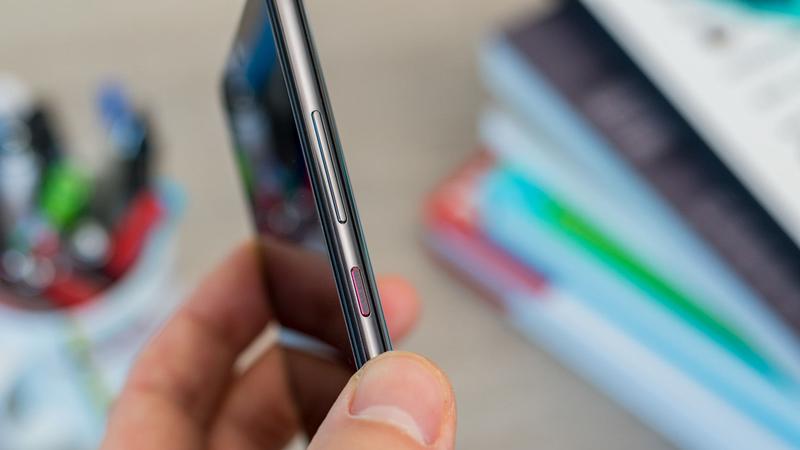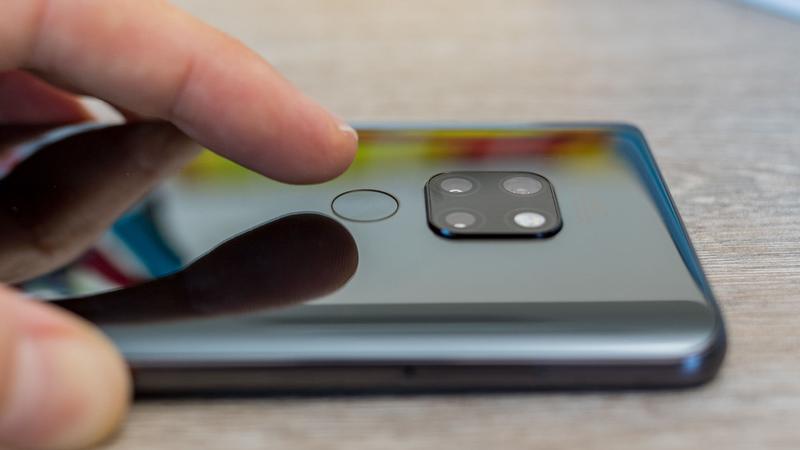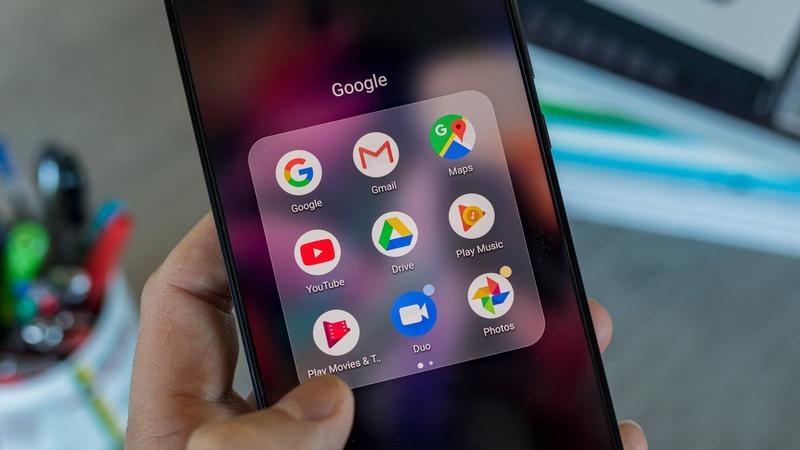We’ve spent some time with the Huawei Mate 20, and we’re blown away by what’s on offer. In fact, it makes it all the more disappointing that Huawei has confirmed that the Huawei Mate 20 will not go on sale in the UK. Find out why in our Huawei Mate 20 review.
Pricing and availability
Though the Huawei Mate 20 Pro is readily available to buy at a number of UK retailers, the same can’t be said for the Huawei Mate 20. Huawei has confirmed that the smartphone won’t be released in the UK, which we think is a real shame as it offers a slightly cheaper alternative to the Mate 20 Pro for those that don’t need features like wireless charging or 40Mp snappers. To give readers a rough idea of cost, the 64GB Huawei Mate 20 is priced at €799 in Europe, equating to little over £700 in the UK. If you do want to get your hands on one, the best place to get hold of one right now seems to be Geekbuying at £712. Oh, and it should come as no surprise that the Huawei Mate 20, or the Pro, won’t be available to buy in the US.
Big display, gorgeous design
The first thing you’ll notice about the Huawei Mate 20 is the gorgeous Dewdrop display, offering an impressive screen-to-body ratio and a small, unobtrusive notch housing the front-facing camera, an LED for notifications and a speakerphone for calls. It’s nothing short of gorgeous, and we think it’s one of the best implementations of a notch to date – even if you don’t get the full facial recognition of the Mate 20 Pro. It’s a 6.53in RGBW HDR display with an 18:7:9 aspect ratio to help the Mate 20 feel like a conventional smartphone. Don’t let the size put you off; thanks to the near bezel-less design of the smartphone, it’s not as unwieldy as phablets were a few years ago. In fact, it’s similar in size to the Sony Xperia XZ3 at 158.2 x 77.2 x 8.3mm while offering more bang for your buck in the display department. It boasts a crisp 1080 x 2244 resolution equating to 381 pixels-per-inch and features smart resolution technology that can intelligently adjust the resolution to conserve battery life – what’s not to like? That gorgeous display is housed in a stunning combination of glass and aluminium, with curved glass on the top, bottom, left and right of the rear to make the phone more comfortable to hold over long periods of time.
The centrepiece of the design is the triple lens setup on the rear, housed in a square setup that, according to Huawei’s Richard Yu, mimics the look of high-end sportscar headlights. It’s a new, tidy look for the Mate 20 series, and one we prefer to the vertical three-lens setup of Huawei’s P20 Pro. That’s not the only new design choice to make an appearance on the Huawei Mate 20; the smartphone, along with the Mate 20 Pro, are the first Huawei devices to boast the new hyper optical pattern finish. While it’s smooth to the touch, running your nail across the rear of the smartphone will produce a similar effect to scratching vinyl. The end product is a finish that isn’t only unique (and strangely satisfying to scratch), but aids with grip and helps hide fingerprints and smudges. The hyper optical pattern is available in Midnight Blue, but if that’s not your cup of tea, you can also get the Mate 20 in Huawei’s unique Twilight finish, and Black for a more sleek, sophisticated look. The combination of a beautiful display, stunning design and eye-catching finishes makes the Huawei Mate 20 one of the best-looking smartphones of 2018 – and we haven’t even mentioned the best features yet.
Impressive internals
Inside the Huawei Mate 20, you’ll find Huawei’s latest processor; the Kirin 980, the world’s first 7nm chipset in a smartphone. It boasts improvements not only in speed compared to the last-gen Kirin processor, but power efficiency and performance too. That’s paired with the latest Mali G76 GPU and 6GB of RAM to produce flagship-level performance that provides buttery smooth scrolling on Twitter, great performance on PUBG Mobile and improvements in AI. In terms of storage, you get a single option; 128GB. That should be more than enough for the majority of users, but for those that need a little more to store all those games and selfies, the Mate 20 offers support for Huawei’s new proprietary NM (Nano Memory) card. It’s the same size as a Nano SIM card, and fits into the second SIM card slot when not in use. That offers an additional 256GB of memory, bringing the storage up to a whopping 384GB, the only issue is that Huawei is yet to release any information on availability or pricing. We ran a series of benchmarks to see how the Kirin 980-touting Mate 20 holds up against other 2018 flagships including the Samsung Galaxy S9, OnePlus 6 and iPhone XS. With a Geekbench 4 multi-core score of 9712, the Mate 20 beats all Android rivals, losing out only to Apple’s A12 Bionic chipset in the iPhone XS. It scored impressive numbers in our graphics tests too, with 48fps in GFXBench Manhattan 3.1 and 27fps in the high-level Car Chase simulation. That’s more than what some gaming smartphones achieved in our benchmarks! Couple that with an impressive JetStream score of 91.7, and you’ve got a blistering smartphone that can handle just about anything you can throw at it.
The Kirin 980 also powers Master AI 2.0, which enhances camera performance and helps the phone produce some of the best smartphone-captured images we’ve seen to date. Intrigued? You should be.
A truly phenomenal camera setup
Arguably as impressive as the 7nm Kirin 980 is the triple Leica camera setup on the rear. Huawei has ditched the monochrome sensor featured on earlier models, and instead opted for a 12Mp f/1.8 wide angle lens, a 16Mp f/2.2 ultra-wide angle lens and an 8Mp f/2.0 2x telephoto lens alongside a dual-tone flash to help you capture the best shot, no matter the situation.
The photos produced from the trio of rear-facing cameras are stunningly detailed, perfectly capturing the moment. That’s in part due to Master AI 2.0, powered by the new chipset. The built-in AI can recognise around 1500 scenes and adjust the camera settings to get the best shot possible, whether that’s upping the saturation in photos of brightly-coloured sweets or switching to Portrait mode when faces are detected. It does more than make photos look pretty, though. The Master AI 2.0 features real-time object recognition in both photo and video shooting modes, allowing the phone to keep focus on the subject as they move around. That makes it easier to take in-focus photos of kids, pets and anything else that won’t stay still!
The Huawei Mate 20 also features a dedicated Night mode, powered by the AI. The phone essentially takes a five-second long-exposure shot to capture as much light and detail as possible and uses AI to correct the blurriness from shaky hands. The end result is nothing short of stunning, capturing more light than we can see with our own eyes in certain environments. The AI also powers a special shooting mode that allows you to a shoot black-and-white video while the subject is captured in colour, and while it sounds impressive, our results in testing have been hit-and-miss. It looks cool when it works, but it’s unlikely that you’ll shoot an entire clip that looks perfect.
While on the subject of video, the rear-facing camera setup can record 4K@30fps, 1080p@60fps, 1080p@30fps (with EIS) and, for lovers of slow-mo, 720p@960fps. It’s a better implementation of super slow-mo than we’ve seen on other smartphones too. The Mate 20 uses the built-in AI to detect motion in the scene and will automatically trigger the recording to capture the best moment. It’s much easier than trying to time it perfectly yourself, and results in perfectly-timed super slow-mo videos. While the rear-facing camera setup is impressive, Huawei hasn’t forgotten about the front-facing camera. It’s a wide-angle 24Mp snapper that captures impressive detail, though somewhat disappointingly, the front-facing camera doesn’t seem to get the Master AI 2.0 treatment. You do still get a Portrait mode with beautifying effects and HDR support, and it can record video at 1080p@30fps. It’s more than enough for the occasional selfie and video chat, that’s for sure!
Other specs of note
Other impressive specs of the Huawei Mate 20 include CAT21 support, offering up to 1.4GBPS Wi-Fi transfer speeds, Bluetooth 5, dual-band Wi-Fi, NFC and improved GPS capabilities. You’ll get more accurate GPS tracking in built-up areas thanks to input from A-GPS, GLONASS, BDS, GALILEO and QZSS, ideal for those that use their smartphone to track runs and bike rides. The battery is also impressive at a whopping 4,000mAh. We’ve comfortably got a day’s use out of the smartphone when gaming, surfing the web and taking snaps, and we’re confident that those who are more conservative use could easily squeeze 1.5 days out of a single charge. When it does need a top-up, the 22.5W SuperCharger provides around 57 percent of charge in only 30 minutes. It’s ideal for power-users that aren’t tethered to a desk for work, though our one complaint is that it doesn’t offer wireless charging support for easy charging.
You’ll find a fingerprint scanner on the rear for secure authentication, but the Mate 20 also offers facial recognition support. It doesn’t feature the tech of the Mate 20 Pro so it’s nowhere near as secure, but it’s fast and convenient if you’re in a well-lit environment. It features a USB-C port for charging and data transfer, and prospective consumers will be happy to know that it features a 3.5mm headphone jack. No need to ditch those wired headphones just yet! You’ll also find a handy IR Blaster at the top of the smartphone that can be used to control TVs, Air Con units and more. While it’s not a feature many will use, we’re certainly enjoying the all-in-one experience it provides.
Software
The Huawei Mate 20 features the company’s own EMUI 9.0, based on Android 9.0 Pie. It offers a range of improvements over previous iterations of EMUI, both in terms of UI and performance. The Settings menu has been revamped to be much simpler, with handy prompts to settings that the smartphone thinks you want to access. Huawei also claims that apps open 51 percent faster and are 42 percent faster in use compared to older Huawei smartphones, and that’s something we can attest to. The performance is smooth, even when quickly scrolling through Facebook and Twitter – a jittery experience on some smartphones.
Our favourite feature? iPhone XS-esque full-screen gesture navigation. Like the iPhone, you swipe up from the bottom of the display to go Home and swipe and hold to access the multitasking menu. However, Huawei has improved on the formula and built-in a back button accessible by swiping in from the side of the display. It makes one-handed use much easier, and it’s incredibly intuitive. You can also swipe up from either bottom corner to access Google Assistant when required. Huawei also claims that performance will stay consistently high, even after 18 months. According to research done by a third-party, the Huawei Mate 20 will slow down by five percent over 18 months, compared to a projection of 28 percent for the Samsung Galaxy Note 9. Huawei has put a focus on HiVision and HiTouch in EMUI 9. The assistant essentially replaces (and looks to improve on) Google Lens, offering the ability to not only identify objects and provide related images and information, but send you to one of over 20 e-commerce platforms to buy it. It’s ideal if you’ve seen something that you want to buy but you’re not sure where to purchase it from – in theory, of course, because the reality is that it isn’t very good. We’ve tried a range of products – from tech to clothes to home accessories – and not once has HiVision or HiTouch sent us a correct listing to buy it. The identification feature isn’t much better either, as it struggles to recognise even name-brand items like bottles of coca cola or Xbox One controllers. Like we say, the theory is great, but the execution is flawed at best. Hopefully we’ll see improvements to the features in the coming weeks and months, but we’re not holding our breath.
Verdict
We’re seriously impressed by the Huawei Mate 20. Though it doesn’t quite boast the bells and whistles of the Mate 20 Pro, the Mate 20 is an amazing smartphone in its own right. It boasts impressive internals that offer great speed and performance no matter the task, and the trio of lenses on the rear capture gorgeously detailed, well-lit images. Master AI 2.0 not only changes camera settings to get the best possible shot, but can actually track subjects to make sure the focus is always perfect. Don’t even get us started on that display. It’s stunning, crisp, bright and we’re a huge fan of the Dewdrop design it employs. Couple that with the new hyper optical pattern finish and you’ve got one of the best-looking, fastest smartphones on the market at the moment. The real question is; why isn’t it coming to the UK officially?
Related stories for further reading
Best phone deals Best SIM-only deals Best phone network All smartphone reviews Best smartphones How we test smartphones Best new phones coming soon
Lewis Painter is a Senior Staff Writer at Tech Advisor. Our resident Apple expert, Lewis covers everything from iPhone to AirPods, plus a range of smartphones, tablets, laptops and gaming hardware. You’ll also find him on the Tech Advisor YouTube channel.







